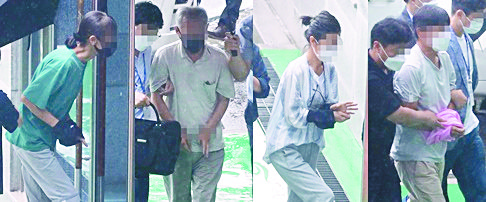Some reflections on spies
Published: 11 Aug. 2021, 19:41

The author is a national news editor of the JoongAng Ilbo.
There are a few instances in which newspapers omit prefixes or titles. One instance is for celebrities and athletes that the public is already familiar with and would seem awkward with a prefix. Another instance is for spies.
When I was young, spies — more specifically, North Korean spies — only existed as an image on the media. I’ve seen spies on television programs such as “113 Investigation Headquarters,” an anticommunist drama that was a rival of the “Investigation Team Chief.”
Anticommunist animations like “General Ddoli Catches a Spy” were also teaching materials. These videos made use of stereotypical images of a spy, notably represented by poisoned needles, random number tables, and hideouts.
It was only after I grew up that I recognized a spy as a tangible being of flesh and blood. Lee Seon-sil was an old lady who was the mastermind behind the case of the Workers’ Party of Korea’s Central Region Chapter. Jeong Su-il was an intellectual who was disguised as Arabic professor Muhammad Kansu. Kim Young-hwan, the author of “Steel Letters,” was the main culprit of the People’s Democratic Revolutionary Party case. They were actual people.
After I became a reporter and covered the prosecutor’s office, the distance to the spies narrowed. Every time I read the hundreds of pages of warrants and indictments for the National Security Act violation cases, the beginning — “North Korean Communist Party claims the title of a nation” — gave me a chill.
Of course, not all of them were true. Because it was so easy to brand someone as “the enemy of the state,” anyone could be easily manipulated as a spy by the need of the power or through an unreasonable investigation, as we’ve seen in the People’s Revolution Party incident and the more recent Seoul civil servant spy case. Yoon Tea-sik — who colluded with the power and turned his wife into a spy after murdering her in the so-called Suzi Kim Case — was the living witness exposing the ugly truth of manipulation by the public security authorities.
However, as most investigation materials contain a considerable amount of truth, it is undeniable that most of the suspects identified on the cover were clear risk factors.
Espionage suspects have resurfaced after being forgotten for a long time. But why do I feel pity rather than fear, as in the past? Perhaps because of the outdated awareness, lack of a sense of reality, and their marginalized status within the progressive group. North Korea’s situation is also pathetic that it has to beg for something similar to information by relying on this level of “humint.”










with the Korea JoongAng Daily
To write comments, please log in to one of the accounts.
Standards Board Policy (0/250자)